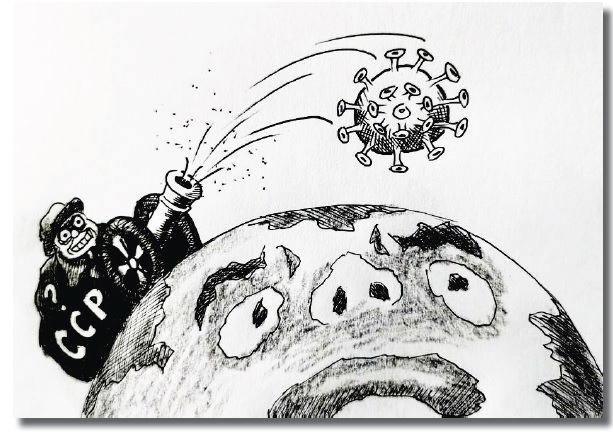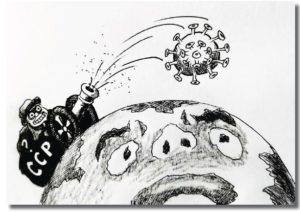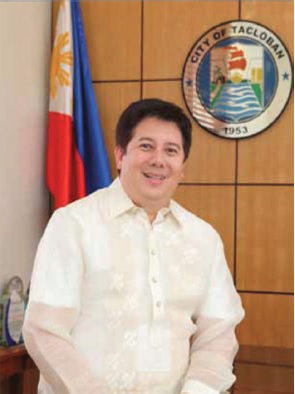Many Western media, health, and political organizations are now naming the COVID-19 as CCP Virus, which stands for Chinese Communist Party (CCP). This, accordingly, is the most appropriate name after numerous proofs had surfaced, from the ongoing proves, that the present corona virus came from a Wuhan laboratory, not from a wet market as previously reported.
If it were true that this virus didn’t originate from a wet market, which does not exist there based on reports, then that virus must have been the handiwork of the Chinese regime, which directs and controls research activities throughout the country. And, for sure, it must be for crucial reasons that this virus was created; reasons that work to the regime’s great advantage in various ways over other countries.
At first, the Chinese government protested against the idea of naming it as Wuhan Virus for its racist implications. With the help and guidance of World Health Organization (WHO), another body accused of acting as China’s mouthpiece, they came up with the name COVID-19, which was immediately and widely used afterwards. This new name then is far safer and does not implicate any race or nation.
But with the many evidences pointing to the CCP’s role in the production and spread of the virus worldwide—many of which had been suppressed, covered up, and destroyed, in fact—full-scale investigations were still able to gather pieces of documents, images, and other proofs that the CCP was behind such virus production, no wonder why the regime had had plenty of preparations made to combat a global pandemic, such as the prior stockpiling of safety kits, masks, and suits.
As to the likely question of why would the CCP create and spread such a virus, one answer could be its glaring militarization of strategic locations like the West Philippine Sea, the grabbing of other countries’ territories, and the strengthening of their defenses while the potentially powerful rivals are desperately crippled by the deadly pandemic—the CCP virus.
An appropriate name
SAP beneficiaries in the region starts to receive cash
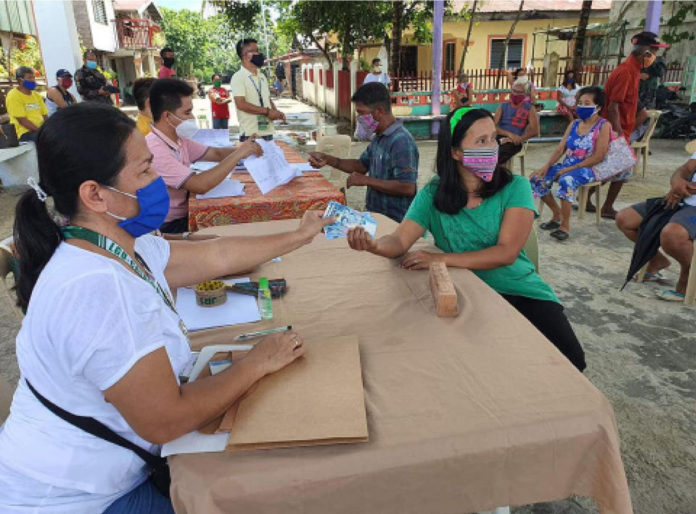
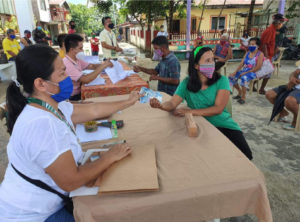
TACLOBAN CITY-Bernardita Codilan,67, could not contain her happiness after more than an hour of waiting at their barangay hall, finally receive the P5,000 social amelioration program (SAP) of the national government on Wednesday (April 22) afternoon.
Codilan was one of the 6,984 residents of the town of Barugo, Leyte province which was among the first areas in Eastern Visayas to distribute the financial assistance starting on April 18 and concluded four days later.
“Of course, I am happy! This amount is huge for us poor people. This P5,000 will go a long way as I can now buy my medicine for my high blood pressure with the rest of the amount for our food needs,” Codilan, a resident of Barangay District II said.
Town Mayor Ma. Rosario Avestruz said that when she learned that the national government will be providing financial assistance, she immediately moved in the listing of those who could qualify for the aid.
Among those who are to receive the two-time basis P5,000 cash assistance are the senior citizens, lactating mothers, single parents, person with disabilities and the low-income earners who were displaced due to the pandemic caused by the coronavirus disease 2019(COVID-19).
The town mayor reminded the beneficiaries to use the money that they received from the government.
She warned that those who will squander the money other than its original purposes, which to help them during this time of crisis by buying their daily and essential needs, could be delisted for the second payout scheduled next month.
“If they will spend for other purpose like for a tupada (cockfight) or liquor or worst, for illegal drugs, they will be delisted from the list for those who will receive the second payout,” Avestruz said.
For the entire Eastern Visayas, the regional office of the Department of Social Welfare and Development (DSWD) has identified 596,094 beneficiaries for SAP.
Joshua Kempis, information officer of the DSWD-8 for disaster response management division, said that they intend to complete the distribution on April 30.
As of Wednesday, about9,413 beneficiaries from the provinces of Leyte (4,443), Samar (1,963), and Eastern Samar (3,007) have received the P5,000 financial assistance.
“We just like to remind to the beneficiaries that this emergency subsidy is meant to help the people sustain their basic needs, especially now that most of people’s sources of income have been affected due to COVID-19,” Kempis said.(JOEY A.GABIETA)
Quakes rock Leyte, Southern Leyte provinces
TACLOBAN CITY-Series of earthquakes rocked some parts of Leyte and Southern Leyte provinces on Wednesday (April 22) with the Philippine Institute of Volcanology and Seismology (Phivolcs) reporting of damages.
The jolts felt by the two provinces ranged from 1.5 magnitude to 4.6 magnitude.
In Leyte, the quakes were felt in the town of Capoocan having a magnitude of 2.4 am that occurred at around 8:48 am while a 2.4 magnitude tremor hit the town of Matag-ob with a magnitude of 1.5 that occurred at around 8:49 am.
Meanwhile, a series of quakes also hit in Southern Leyte with the provincial disaster risk reduction management office saying that the quakes did not result to any damages.
The first tremor occurred in Saint Bernard at around 5:45 am having a magnitude of 4.6, another jolt was felt in the town at about 6:37 am having a lesser magnitude of 2.8.
At 6:37 am, another earthquake took place in the town of San Francisco with a magnitude of 2.2.
A separate jolt was felt in the town of Anahawan at 7:01 am with a magnitude of 1.7.
Another earthshaking happened at about 10:39 am with the epicenter in San Juan with a magnitude of 2.4.
All the quakes in Leyte and Southern Leyte were all of tectonic in origin.
(JOEY A. GABIETA)
DOH reports region’s 7th COVID-19 patient
New case niece of woman from Burauen town
TACLOBAN CITY-A 25-year old woman is the latest confirm coronavirus disease 2019(COVID-19) case of the region.
The new patient is the niece of the 58-year old woman from Burauen town, the first case of Leyte province, Dr. Minerva Molon, regional director of the Department of Health (DOH), said during a virtual press conference Friday afternoon.
Molon said that the woman, identified as Eastern Visayas COVID-19 patient number 7, has exhibited sore throat and cough on April 18.
Swab sample was taken from her on April 19 which was brought to the Vicente Sotto Memorial Medical Center in Cebu City with the positive result obtained last April 22.
She is currently confined at the municipal isolation unit for observation and management.
Molon said that unlike in the previous COVID-19 patients, the 25-year old woman was not brought at the Eastern Visayas Regional Medical Center (EVRMC), the referral hospital for the ailment, as she did not have any preexisting health problem.
The aunt of the latest COVID-19 patient is currently confined at the EVRMC since March 23.
The DOH-8 regional director said that with Burauen now having two confirmed COVID-19 cases, there is now a community transmission of the ailment considering that they lived in the same house.
Molon again reiterated for the public to adopt to the ‘new normal’ brought by the virus by wearing face mask, observe social distancing, personal hygiene and staying at home.
“From the beginning we’ve been calling the public to stay at home. If we stay, we cannot infect others. And from there, we can stop the transmission and spread in early stage,” the DOH regional director said.
On Friday, the DOH sent the batch 12 samples comprising 133 specimens from the contact tracing in Tarangan and from other areas.
(JOEY A. GABIETA, ROEL T. AMAZONA, RONALD O. REYES)
EV cops raise close to P9 million
TACLOBAN CITY-Close to P9 million was raised by personnel of the Philippine National Police (PNP) in Eastern Visayas as part of the organization’s assistance to help individuals who were affected by the impacts of the coronavirus disease 2019( COVID-19).
This was disclosed by Police Regional Director Bernabe Barba during a virtual press conference on Friday who said that the money they have collected will be forwarded to their central headquarter in Camp Crame.
Barba said that the more than 9,000 personnel of the PNP in Eastern Visayas joined in the fund raising by giving a ‘portion’ of their salary.
Earlier, PNP chief General Archie Gamboa has called on all police personnel to help people who were greatly affected by the COVID-19 pandemic, particularly the poor, by launching a fund-raising he dubbed as ‘Team PNP Bayanihan Fund Challenge.’
“We have this fund raising, collected from a part of our salaries, to answer the call of our government to help our people,” Barba said.
He said that during their fund-raising activity, which started on April 14, they were able to collect more than P8.9 million from the various police offices and units in the region.
The collected amount was forwarded to their national headquarters on Thursday (April 23), the police regional director said.
Lieutenant Colonel Ma. Bella Rentuaya, police regional spokesperson, said the initiative is an offshoot of a fund-raising project launched by Philippine National Police (PNP) chief General Archie Francisco Gamboa on April 14, 2020 dubbed as “Team PNP Bayanihan Fund Challenge.”
The PNP called on all its personnel, regardless of rank and position, to practice the spirit of volunteerism to assist in augmenting funds in support for the government’s Social Amelioration Program (SAP).
The move is the PNP’s response to Presidente Rodrigo Duterte’s call for the entire Filipino nation to raise funds to support the campaign of the government and help those who are greatly affected by the COVID-19 crisis, particularly those belonging to the poorest of the poor families, according to PRO-Eastern Visayas in a statement.
The various offices and units of the PNP in the region are also doing their own share in food-giving to families and individuals hard-hit by the pandemic, dubbed as “Kapwa Ko, Sagot.”
Among those assisted by the police organization was the four orphaned siblings living in Barangay Camparanga of Pambujan town in Northern Samar.
The gesture, posted by the 2nd Northern Samar Provincial Mobile Force Company, on their Facebook, touched netizens that it generated more than 4,400 likes and 1,700 shares as of April 24.
Various individuals and groups have signified to help the children who live among themselves after their parents were killed in a hacking incident last year.
The children, with the oldest at 13 years old and the youngest only six years old, is being looked after by their aunt who have her own children and have no steady income of her own.(JOEY A. GABIETA/
RONALD O. REYES)
Alfred asks DOH not to bring COVID-19 suspects to Tacloban
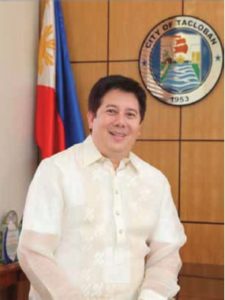
By: JOEY A. GABIETA
TACLOBAN CITY-The mayor of this city, Alfred Romualdez, has issued an appeal to the Department of Health (DOH) to stop transporting patients confirmed to have afflicted with the coronavirus disease 2019(COVID-19) but are only showing ‘mild symptoms.’
Patients who were confirmed to have COVID-19 are brought at the Eastern Visayas Regional Medical Center (EVRMC), based this city.
But Mayor Romualdez said that transporting these patients to Tacloban gives an impression that the city, considered as the regional center of Eastern Visayas, has COVID-19 cases.
Tacloban City, with more than 214,000 people, remains to be COVID-19-free city though it is monitoring nine individuals suspected to have the virus.
“Why bring the patients to Tacloban City, at the EVRMC when they have only showing mild symptoms. Why not just isolate them at their respective hospitals and not transport them here,” Romualdez, in a hastily called press conference, said on Wednesday (April 22).
Romualdez, however, said that if the patient is suffering severe symptoms or the place where he comes from have no needed medical equipment, he would not question the decision of the DOH to transport the patient to the EVRMC.
“For humanitarian consideration, if the patient is suffering severe symptoms, then the city will accept him with open arms. But we have observed that those patients were only (suffering) of mild symptoms,” he said.
He said that having a COVID-19 patient though coming from outside Tacloban, gives an impression that the city has its own COVID-19 case and could expose its people of possible transmission of the virus.
Romualdez has placed the entire city under restrictive community quarantine effective March 21 which is to end on April 28.
He, however, imposed stricter border control after a confirmed COVID-19 case was transported by the DOH to the EVRMC who come from Burauen, Leyte last April 16.
But in a separate statement, the DOH said that EVRMC has been identified as the referral hospital for those suffering from COVID-19, adding that during the transportation of the patient, their staff strictly follows the protocols like the wearing of the personal protective equipment with the ambulance used immediately being disinfected to ensure that no virus would be transmitted.
No member of the patient’s family is also being allowed during the travel, the DOH said.
It also added that the six confirmed cases have ‘comorbidities’ such as asthma, hypertension, and diabetes.
“This is the reason why they were transported to the referral hospital. They need close monitoring and proper management. Also, our manpower, particularly specialist physicians capable of handling COVID-19 cases are in EVRMC,” the DOH said.
“And if the result turned positive for COVID-19 and patient is 60 years old above and with comorbidities then they will be transported to EVRMC,” it added.
The DOH also said that all local government units, as the ‘primary responders to the public health emergency,’ are mandated to prepare their own community and quarantine unit to cater the mild symptomatic suspects.
Currently, there are only two COVID-19 patients confined at the EVRMC- one from Burauen, Leyte and Tarangan, Samar.

